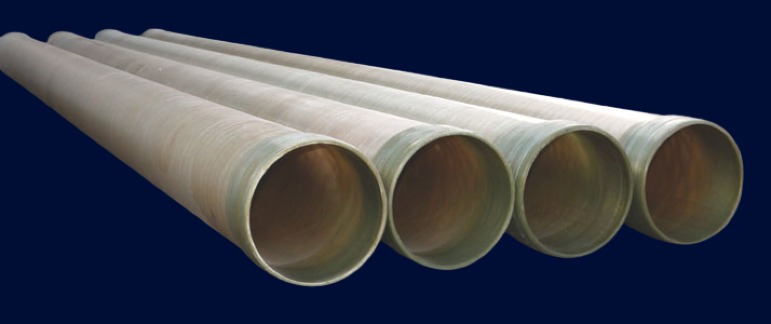FRP/GRP Pipes
The widely utilised helical filament winding technology is used to make our FRP Pipe/GRP Pipes. Continuous glass strand roving impregnated with polyester resin and helically wound on a revolving mandrel at a set winding angle are used to make FRP/GRP pipes using the filament winding process. The winding is done in bi-directional layers until the appropriate wall thickness is reached. FRP/GRP pipes made by filament winding have better physical properties than pipes made by other methods, hence FRP/GRP pipes made by the helical filament winding method will have a longer service life without influencing supply costs.
Features & Advantages of FRP Pipes
- CORROSION RESISTANCE: Our GRP Pipes are made of glass fibre composite material and polyester resin. GRP is an inert material with exceptional corrosion resistance, chemical resistance, and weathering resistance.
- NON-TOXICITY: The filament winding production technique, combined with the polymerisation and vaporisation processes, allows Our GRP Pipes to be manufactured in strict accordance with the laws of forces that govern the building of pipe that will come into contact with potable water and food.
- HYDRAULIC EFFICIENCY: Our GRP Pipes have a very smooth internal surface, which allows them to transport a high flow at a low frictional head loss, resulting in lower pumping costs and electricity savings.
- LONGER PERIOD OF SERVICE: Our GRP Pipes’ hydraulic design basis (HDB) is such that, even after 50 years of continuous service, they will have a safety factor of 1.8 times their pressure class. In comparison to C.I., STEEL, G.I., and P.S.C. Pipes, our GRP Pipes will have a considerably longer service life, reliability, and durability with a far reduced life cycle cost.
- PRESSURE SURGE: High surge pressure resistance In comparison to steel and C.I. pipes, our GRP Pipes have a higher resistance to surge pressure and a higher stiffness, resulting in a lower risk of pipe bursting due to water hammer.
- LIGHT WEIGHT: When compared to other materials, our GRP Pipes have a lower strength-to-weight ratio. It is light in weight, weighing 1/10 P.S.C., 1/5 steel, and 1/8 C.I. As a result, our GRP Pipes are simple and quick to install, handle, modify, and repair.
- LOW ELECTRICAL AND THERMAL CONDUCTIVITY: Our GRP Pipes have good thermal insulating capabilities, therefore they don’t need to be insulated on the outside to keep the temperature inside the pipe consistent. For GRP Pipes, even cathodic protection is not necessary.
Applications of FRP Pipes
- Potable Water & Raw Water Supply
- Effluent & Sewage Water Supply
- Chemical & Fertilizer Plants
- Desalination Plants
- Offshore Oil Production
- Refinery, Petrochemical & Petroleum Plant
- Power Plant
